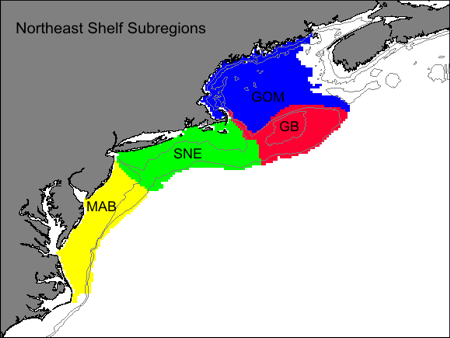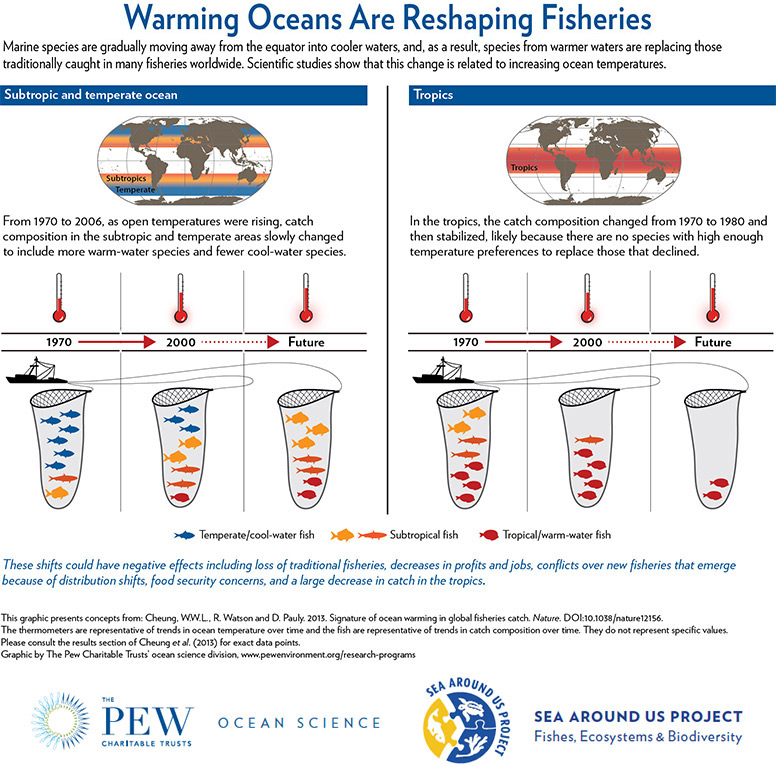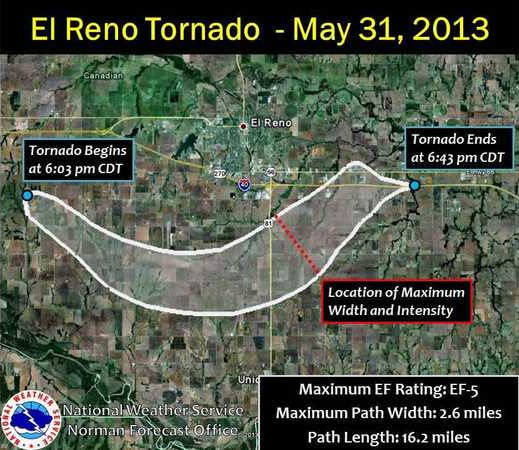Ocean Temperatures and Fisheries Tell Their Own Climate Change Story
The “Northeast Fisheries Science Center” is part of NOAA. One of its missions is to keep track of fish stocks so they can be managed in a sustainable way and to gather physical data on the ocean that may impact these stocks. The map labeled “Northeast Shelf Subregions” was released in April 2013.
The map is color coded and details four separate ecoregions within the Northeast Shelf Large Marine Ecosystem that stretches from Cape Hatteras, NC to the Gulf of Maine. In 2012, the sea surface temperature [SST] for this region was nearly 3 degrees Fahrenheit higher than the average over the past 30 years. The SST was also the warmest in 150 years of measurements.

The areas in the map are defined as: MAB, Mid-Atlantic Bight; SNE, Southern New England; GB, Georges Bank; and GOM, Gulf of Maine.
Was it a coincidence that with all of this additional heat energy in the ocean and atmosphere, that in the fall of 2012 the Northeast was hit by the “largest hurricane in Atlantic history as measured by the diameter of gale force winds [1,040 miles]”? Interesting correlation but more data are needed to validate this idea. [Climate Progress, Apr 28, 2013.]
What is known about the increased temperature of the Atlantic Ocean is the impact on the fish stocks and species being caught. See the chart labeled, “Warming Oceans are Reshaping Fisheries.”
Let’s focus on the top left side of this chart, “Subtropic and temperate ocean” with the three fish nets indicated. The net marked as “1970”, illustrates a mix of warm-water and cool-water species, that gradually change to a different mix in “2000”, with then additional changes in the species mix under the warmer “Future” scenario. The science suggests that the total fish stocks will remain similar but with higher percentages of warm-water fish. The cool-water fish will have migrated further north.
The situation on the right side of the chart labeled “Tropics” is different, however. Here, as the waters warm and we go from “1970” to “2000” to “Future”, some species move out and there are no otherwarm water species to move in to replace them. Total fish stocks may not remain the same and the species mix will be reduced. This could have economic impacts if less desirable species predominate

As we continue to change the chemistry of the atmosphere by adding large amounts of greenhouse gases, primarily carbon dioxide from fossil fuels, and trap more heat in all of Earth’s systems, extreme weather events continue to occur. The series of tornados that hit Moore, OK, and surrounding area, on 20 May 2013, were powerful by any measure. One was an EF-5 which had winds estimated at over 200 mph and destroyed or damaged over 13,000 homes.
However, on May 31 2013, another massive tornado hit Reno, OK. It also was an EF-5, the strongest measurement category, and had winds that measured over 300 mph! It’s diameter of about 2.6 miles was the widest tornado ever measured on Earth. Note the graphic here. The energy and power of this single storm is still being studied and may be the most energetic tornado on record.

Speaking of wind, a June 17, 2013 report from cleantechnia.com indicated that globally, wind turbine capacity had crossed the 300,000 megawatt mark, or 300 gigawatts. This is equivalent to about 300 nuclear power plants. This amazing progress will hopefully continue.
If the 19th century belonged to coal, the 20th to oil, the 21st belongs to clean energy with wind being the foundation [per cleantechnica.com].
There was a conference in March 2013, of the Climate Parliament in Brussels, Belgium that brought together people from around the world who are committed to the fight against climate change. It included legislators, United Nations representatives, and the International Energy Agency who all agreed that we must reduce our dependency on fossil fuels as one of the most urgent steps needed to combat it.
Led by Connie Hedegaard, EU Commissioner for Climate Action, a final comment at the conference was from a Chinese proverb, “When the winds of change blow, some build walls, and others build windmills.”
The scientific career of Raymond N. Johnson, Ph.D., spanned 30 years in research and development as an organic/analytical chemist; he is currently founder and director of the Institute of Climate Studies USA (www.ICSUSA.org). Climate Science is published the first Sunday of every month.



